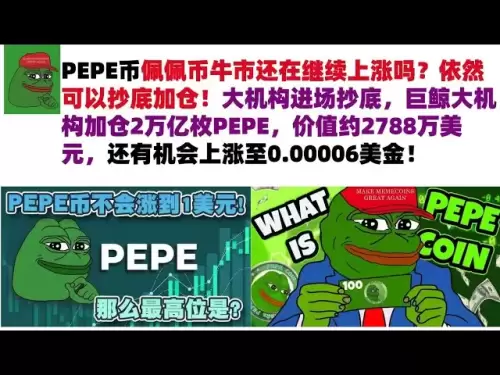-
 Bitcoin
Bitcoin $104,092.7082
-3.90% -
 Ethereum
Ethereum $2,500.1510
-9.45% -
 Tether USDt
Tether USDt $1.0003
0.02% -
 XRP
XRP $2.1161
-5.92% -
 BNB
BNB $644.7652
-3.34% -
 Solana
Solana $143.3632
-10.62% -
 USDC
USDC $0.9995
-0.03% -
 Dogecoin
Dogecoin $0.1728
-9.80% -
 TRON
TRON $0.2700
-2.70% -
 Cardano
Cardano $0.6282
-9.47% -
 Hyperliquid
Hyperliquid $38.5896
-7.04% -
 Sui
Sui $2.9976
-10.50% -
 Chainlink
Chainlink $13.0865
-10.97% -
 UNUS SED LEO
UNUS SED LEO $8.8697
1.35% -
 Stellar
Stellar $0.2563
-7.44% -
 Bitcoin Cash
Bitcoin Cash $401.8213
-6.21% -
 Avalanche
Avalanche $18.8844
-11.63% -
 Toncoin
Toncoin $2.9457
-8.46% -
 Shiba Inu
Shiba Inu $0.0...01163
-9.64% -
 Hedera
Hedera $0.1538
-10.65% -
 Litecoin
Litecoin $82.4785
-9.46% -
 Polkadot
Polkadot $3.7430
-9.96% -
 Ethena USDe
Ethena USDe $1.0004
-0.01% -
 Monero
Monero $306.8529
-6.55% -
 Dai
Dai $0.9998
0.01% -
 Bitget Token
Bitget Token $4.4842
-5.28% -
 Pepe
Pepe $0.0...01069
-13.19% -
 Uniswap
Uniswap $7.0207
-13.47% -
 Pi
Pi $0.5498
-13.03% -
 Aave
Aave $268.2967
-9.88%
What does the high volume stagnation mean? Is the main force shipping?
High volume stagnation in crypto means high trading but stable prices; it may indicate main force shipping, balanced by equal buying.
Jun 10, 2025 at 11:01 pm
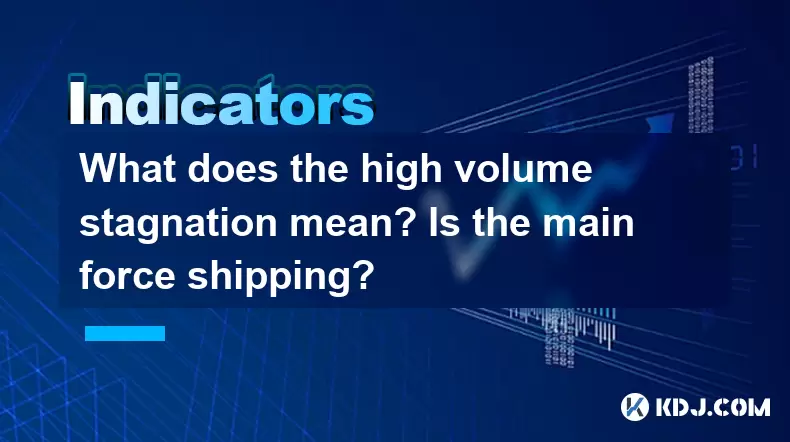
What does the high volume stagnation mean? Is the main force shipping?
In the world of cryptocurrencies, understanding market dynamics is crucial for making informed trading decisions. One phenomenon that traders often encounter is high volume stagnation. This article delves into what high volume stagnation means, whether it indicates that the main force is shipping, and how traders can interpret and react to these market conditions.
Understanding High Volume Stagnation
High volume stagnation refers to a situation in the cryptocurrency market where trading volumes are significantly high, but the price of the asset remains relatively unchanged. This can be a perplexing scenario for traders because high trading volumes typically suggest strong interest and activity in the market, which should ideally lead to price movements.
When the market experiences high volume stagnation, it indicates that there is a lot of buying and selling happening, but the forces of supply and demand are balancing each other out. This balance prevents the price from moving significantly in either direction. Traders need to understand that this phenomenon can be influenced by various factors, including market sentiment, liquidity, and the actions of large investors or "main forces."
Is the Main Force Shipping?
The term "main force" in the context of cryptocurrency trading often refers to large institutional investors or whales who have the capacity to influence market prices through their trading activities. The question of whether the main force is shipping during periods of high volume stagnation is a common concern among traders.
Shipping in trading terminology means that large investors are selling their holdings, often in large volumes, which can lead to a decrease in the asset's price. During high volume stagnation, it is possible that the main force is indeed shipping, but the impact of their selling is being offset by an equal amount of buying from other market participants.
To determine if the main force is shipping, traders can look at several indicators:
- Order Book Depth: Analyzing the order book can reveal whether there are large sell orders that could indicate shipping by the main force.
- Volume Profile: A volume profile can show where the majority of trading volume is occurring, which might indicate whether large investors are selling at certain price levels.
- On-Chain Data: Examining on-chain metrics such as large transaction volumes can provide insights into the activities of major investors.
Interpreting High Volume Stagnation
Interpreting high volume stagnation requires a nuanced understanding of market dynamics. It is important for traders to look beyond the surface-level data and consider various factors that could be contributing to the observed market conditions.
- Market Sentiment: High volume stagnation can be influenced by the overall sentiment of the market. If investors are uncertain about the future direction of the asset, they might engage in high volumes of trading without a clear consensus on price movement.
- Liquidity: High liquidity can lead to high volume stagnation if there is a large number of market participants trading small amounts, which balances out the overall price movement.
- Market Manipulation: In some cases, high volume stagnation could be a result of market manipulation by large investors who are trying to create a false sense of stability to execute their trading strategies.
Trading Strategies During High Volume Stagnation
When faced with high volume stagnation, traders need to adapt their strategies to navigate the market effectively. Here are some approaches that traders can consider:
- Range Trading: Since the price is not moving significantly, traders can engage in range trading by buying at the lower end of the range and selling at the higher end.
- Breakout Trading: Traders can prepare for potential breakouts by setting up buy or sell orders at key resistance or support levels. A breakout from the stagnation could lead to significant price movements.
- Scalping: Given the high volume, traders can engage in scalping, which involves making small profits from numerous trades throughout the day.
Technical Analysis Tools for High Volume Stagnation
Utilizing technical analysis tools can help traders gain a better understanding of high volume stagnation and make more informed trading decisions. Here are some tools that traders can use:
- Volume Indicators: Tools like the Volume Weighted Average Price (VWAP) and the On-Balance Volume (OBV) can provide insights into the relationship between volume and price movements.
- Moving Averages: Using moving averages can help traders identify trends and potential breakouts from the stagnation period.
- Candlestick Patterns: Analyzing candlestick patterns can reveal potential shifts in market sentiment and help traders anticipate price movements.
Practical Steps to Analyze High Volume Stagnation
To effectively analyze high volume stagnation, traders can follow these practical steps:
- Monitor Trading Volumes: Keep a close eye on the trading volumes of the asset in question. High volumes can indicate significant market activity, even if the price is not moving.
- Analyze Order Books: Regularly review the order book to understand the depth of buy and sell orders. This can provide clues about the intentions of large investors.
- Use On-Chain Analytics: Leverage on-chain analytics tools to track large transactions and movements of funds, which can indicate whether the main force is shipping or not.
- Set Up Alerts: Configure price and volume alerts to stay informed about potential breakouts or shifts in market conditions.
- Backtest Strategies: Use historical data to backtest trading strategies that can be effective during periods of high volume stagnation.
Frequently Asked Questions
1. Can high volume stagnation last for a long time?
High volume stagnation can persist for varying durations depending on the underlying market conditions. It can last for days, weeks, or even months if the forces of supply and demand remain balanced.
2. How can I differentiate between high volume stagnation and a consolidation phase?
High volume stagnation typically involves high trading volumes with little price movement, while consolidation phases can occur with varying volumes. Consolidation often precedes a significant price move, whereas high volume stagnation may continue without a clear breakout.
3. Are there specific cryptocurrencies more prone to high volume stagnation?
While high volume stagnation can occur in any cryptocurrency, it is more commonly observed in highly liquid assets with significant institutional interest, such as Bitcoin and Ethereum.
4. What role does market manipulation play in high volume stagnation?
Market manipulation can contribute to high volume stagnation by creating artificial stability in the market. Large investors may engage in high-volume trading to mask their true intentions and execute their strategies without causing immediate price movements.
Disclaimer:info@kdj.com
The information provided is not trading advice. kdj.com does not assume any responsibility for any investments made based on the information provided in this article. Cryptocurrencies are highly volatile and it is highly recommended that you invest with caution after thorough research!
If you believe that the content used on this website infringes your copyright, please contact us immediately (info@kdj.com) and we will delete it promptly.
- Hyperliquid Continues to Outperform the Market, Rallying Again After Unit Spot Token Infrastructure Founder Reveals Two New Tickers
- 2025-06-13 12:00:28
- Is the Arbitrum (ARB) Price Set to Explode? This Chart Reveals the Comeback No One Saw Coming
- 2025-06-13 12:00:28
- PayPal Taps a Payments-Focused Blockchain to Expand Its PYUSD Stablecoin
- 2025-06-13 11:55:11
- Gold Nears a Critical Technical Threshold as Macroeconomic Uncertainties and Geopolitical Tensions Drive Investors to Safer Assets
- 2025-06-13 11:55:11
- Tether Expands Its "Dual Pillar" Investment Strategy with a Minority Stake in Elemental Altus Royalties
- 2025-06-13 11:50:12
- Circle Announces USDC Is Live on the XRP Ledger (XRPL) Mainnet
- 2025-06-13 11:50:12
Related knowledge
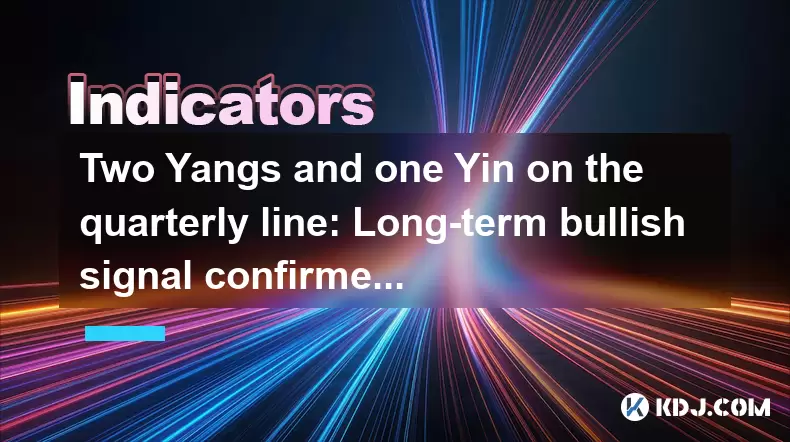
Two Yangs and one Yin on the quarterly line: Long-term bullish signal confirmed?
Jun 12,2025 at 07:00am
Understanding the 'Two Yangs and One Yin' Candlestick PatternIn technical analysis, candlestick patterns play a pivotal role in identifying potential market reversals or continuations. The 'Two Yangs and One Yin' pattern is one such formation that traders often observe on longer timeframes like the quarterly chart. This pattern consists of two bullish (...
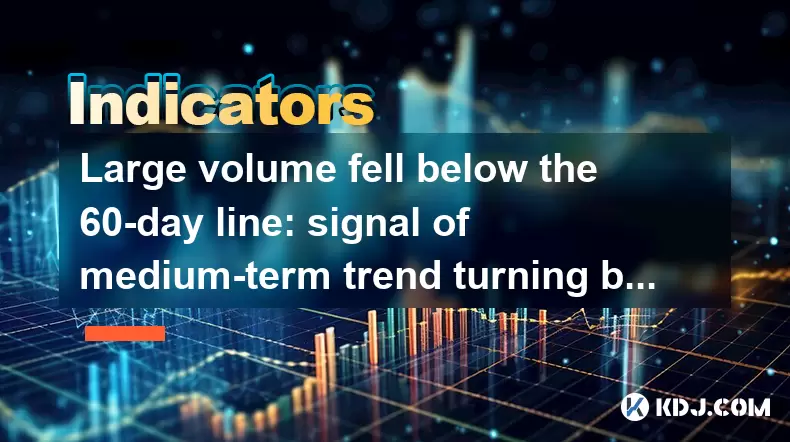
Large volume fell below the 60-day line: signal of medium-term trend turning bearish?
Jun 13,2025 at 03:42am
Understanding the 60-Day Moving Average in CryptocurrencyIn cryptocurrency trading, technical analysis plays a crucial role in predicting price movements. One of the most commonly used indicators is the 60-day moving average (MA), which smooths out price data over the last 60 days to provide traders with insights into the medium-term trend. When large v...
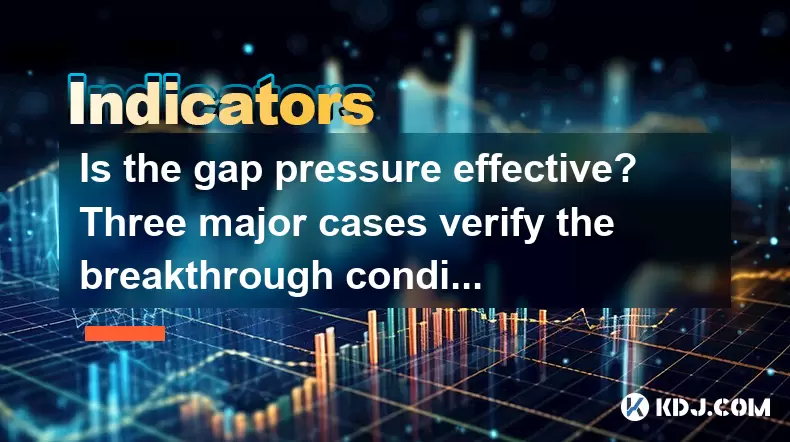
Is the gap pressure effective? Three major cases verify the breakthrough conditions
Jun 13,2025 at 04:35am
Understanding the Gap Pressure in Cryptocurrency TradingIn cryptocurrency trading, gap pressure refers to a technical analysis concept where price gaps form due to sudden market movements. These gaps often occur between the closing price of one trading session and the opening price of the next. Traders pay close attention to these gaps because they can ...
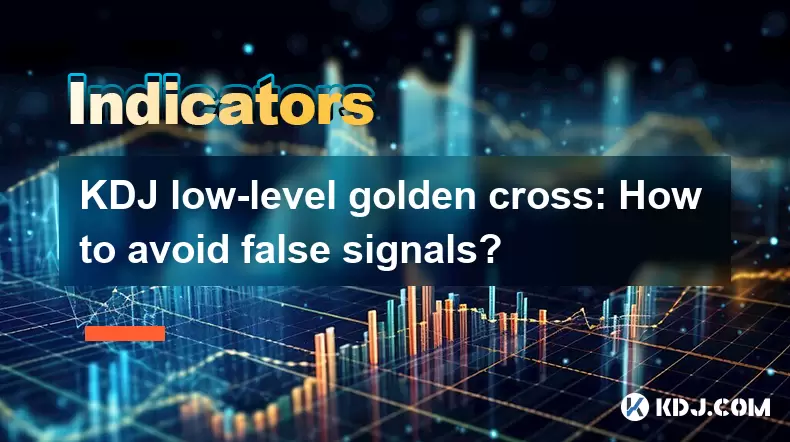
KDJ low-level golden cross: How to avoid false signals?
Jun 12,2025 at 08:21am
Understanding the KDJ IndicatorThe KDJ indicator, also known as the stochastic oscillator, is a momentum-based technical analysis tool widely used in cryptocurrency trading. It consists of three lines: the %K line (fast stochastic), the %D line (slow stochastic), and the %J line (divergence value). These lines oscillate between 0 and 100, helping trader...

Bottom-up volume stagnation: Is it accumulation or heavy selling pressure?
Jun 12,2025 at 01:42pm
What Is Bottom-Up Volume Stagnation?Bottom-up volume stagnation refers to a specific pattern observed in cryptocurrency trading charts where the price of an asset moves sideways or slightly downward, and trading volume remains consistently low over an extended period. This phenomenon is often seen after a sharp price drop or during a prolonged bear mark...
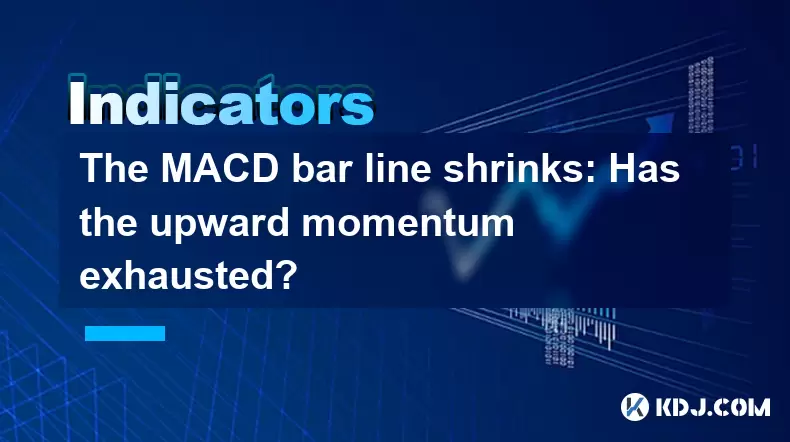
The MACD bar line shrinks: Has the upward momentum exhausted?
Jun 12,2025 at 12:49am
Understanding the MACD Bar LineThe Moving Average Convergence Divergence (MACD) is a widely used technical indicator in cryptocurrency trading. It consists of three main components: the MACD line, the signal line, and the MACD histogram (also known as the bar line). The MACD bar line represents the difference between the MACD line and the signal line. W...

Two Yangs and one Yin on the quarterly line: Long-term bullish signal confirmed?
Jun 12,2025 at 07:00am
Understanding the 'Two Yangs and One Yin' Candlestick PatternIn technical analysis, candlestick patterns play a pivotal role in identifying potential market reversals or continuations. The 'Two Yangs and One Yin' pattern is one such formation that traders often observe on longer timeframes like the quarterly chart. This pattern consists of two bullish (...

Large volume fell below the 60-day line: signal of medium-term trend turning bearish?
Jun 13,2025 at 03:42am
Understanding the 60-Day Moving Average in CryptocurrencyIn cryptocurrency trading, technical analysis plays a crucial role in predicting price movements. One of the most commonly used indicators is the 60-day moving average (MA), which smooths out price data over the last 60 days to provide traders with insights into the medium-term trend. When large v...

Is the gap pressure effective? Three major cases verify the breakthrough conditions
Jun 13,2025 at 04:35am
Understanding the Gap Pressure in Cryptocurrency TradingIn cryptocurrency trading, gap pressure refers to a technical analysis concept where price gaps form due to sudden market movements. These gaps often occur between the closing price of one trading session and the opening price of the next. Traders pay close attention to these gaps because they can ...

KDJ low-level golden cross: How to avoid false signals?
Jun 12,2025 at 08:21am
Understanding the KDJ IndicatorThe KDJ indicator, also known as the stochastic oscillator, is a momentum-based technical analysis tool widely used in cryptocurrency trading. It consists of three lines: the %K line (fast stochastic), the %D line (slow stochastic), and the %J line (divergence value). These lines oscillate between 0 and 100, helping trader...

Bottom-up volume stagnation: Is it accumulation or heavy selling pressure?
Jun 12,2025 at 01:42pm
What Is Bottom-Up Volume Stagnation?Bottom-up volume stagnation refers to a specific pattern observed in cryptocurrency trading charts where the price of an asset moves sideways or slightly downward, and trading volume remains consistently low over an extended period. This phenomenon is often seen after a sharp price drop or during a prolonged bear mark...

The MACD bar line shrinks: Has the upward momentum exhausted?
Jun 12,2025 at 12:49am
Understanding the MACD Bar LineThe Moving Average Convergence Divergence (MACD) is a widely used technical indicator in cryptocurrency trading. It consists of three main components: the MACD line, the signal line, and the MACD histogram (also known as the bar line). The MACD bar line represents the difference between the MACD line and the signal line. W...
See all articles

























